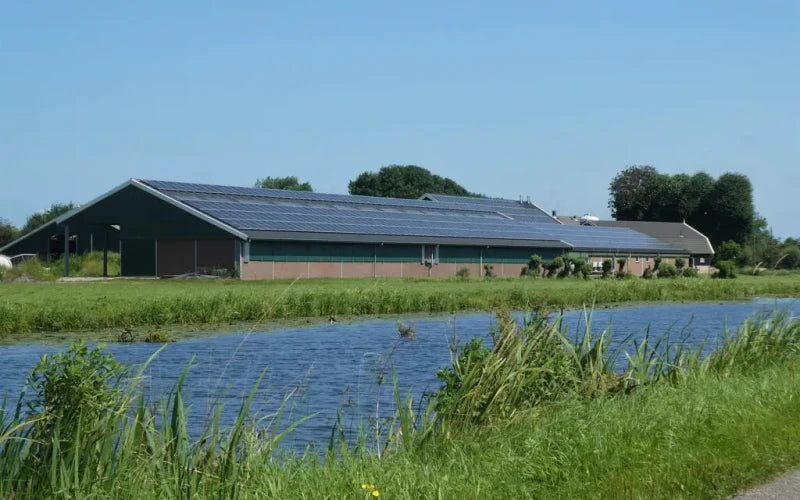
Solar energy has become an increasingly popular choice for environmentally-conscious individuals and businesses looking to reduce their carbon footprint. As more people embrace solar power, understanding the performance and maintenance of solar inverters becomes crucial. In this blog post, we will explore the topic of heat generation in solar inverters, its implications, the factors influencing temperature, strategies to manage heat-related issues, and whether microinverters are more resistant to heat than central string inverters. Additionally, we will discuss the acceptable operating temperature range for solar inverters.
Understanding the Reasons for Heat Generation in Solar Inverters
Solar inverters play a vital role in the conversion of DC (direct current) electricity generated by solar panels into AC (alternating current) electricity that can be used to power homes and businesses. During this conversion process, a certain amount of heat is generated. Heat is a natural byproduct of electrical systems, and solar inverters are no exception. Several components within the inverter, such as transformers, capacitors, and power electronics, contribute to heat generation.
Implications of Excessive Heat on Solar Inverters
While solar inverters are designed to withstand a wide range of environmental conditions, excessive heat can have detrimental effects on their performance and lifespan. High temperatures can lead to increased internal resistance, reduced efficiency, and a decline in overall system output. Prolonged exposure to elevated temperatures may also accelerate component degradation, potentially shortening the inverter's operational lifespan.
Factors Influencing Solar Inverter Temperature
Several factors can influence the temperature of a solar inverter. Firstly, ambient temperature plays a significant role. Solar inverters are commonly installed in outdoor environments, where they are exposed to the sun's rays and the surrounding air temperature. Higher ambient temperatures can result in increased heat transfer to the inverter, raising its internal temperature.
Another factor that impacts inverter temperature is the system's size and power output. Larger systems with higher power ratings generate more electrical energy, leading to increased heat generation. In addition, the efficiency of the solar panels themselves can affect the heat generated by the inverter. Higher panel efficiencies typically result in lower heat generation.
Strategies to Manage and Mitigate Heat-Related Issues in Solar Inverters
To ensure optimal performance and longevity of solar inverters, it is essential to implement strategies to manage and mitigate heat-related issues. Adequate ventilation and airflow around the inverter can help dissipate excess heat. Proper installation, such as mounting the inverter in a shaded area or using ventilation fans, can significantly improve heat dissipation.
Regular maintenance and inspection of the inverter system are also crucial. Cleaning the panels to remove dust and debris can help prevent the accumulation of heat on the surface, improving overall system efficiency. Additionally, monitoring the inverter's temperature and performance can help detect any anomalies or potential issues early on, allowing for timely interventions.
Are Microinverters More Resistant to Heat than Central String Inverters?
Microinverters and central string inverters are two common types of inverters used in solar energy systems. Microinverters are installed on each individual solar panel, while central string inverters are typically placed in a centralized location, serving multiple panels.
When it comes to heat resistance, microinverters have an advantage over central string inverters. Since microinverters are located at the panel level, they are exposed to relatively lower heat loads compared to central string inverters. This decentralized design allows for better heat dissipation, reducing the risk of heat-related performance issues. However, it's worth noting that both microinverters and central string inverters are designed to operate within specific temperature ranges.
What is the Acceptable Operating Temperature Range for Solar Inverters?
Solar inverters are designed to operate within specific temperature ranges to ensure optimal performance and reliability. While the acceptable operating temperature range may vary depending on the manufacturer and model, a common range is between -20°C (-4°F) and 50°C (122°F).
Most inverters incorporate internal temperature sensors and protective features that can shut down the system or reduce output if temperatures exceed the safe operating range. It is important to consult the manufacturer's specifications and guidelines to ensure the solar inverter is operating within its recommended temperature limits.
Conclusion
Heat generation is an inherent characteristic of solar inverters. Understanding the reasons for heat generation, the implications of excessive heat, and the factors influencing inverter temperature is essential for those considering the purchase of solar energy products. By implementing strategies to manage and mitigate heat-related issues, such as proper installation, regular maintenance, and monitoring, the performance and longevity of solar inverters can be maximized. Additionally, the choice between microinverters and central string inverters should be based on the specific requirements of the installation, considering factors such as heat resistance. Finally, it is crucial to adhere to the manufacturer's recommended operating temperature range to ensure the reliable and efficient operation of solar inverters in the long term. Embracing solar energy can lead to significant environmental benefits, and understanding and managing heat-related issues in solar inverters contribute to a sustainable and reliable solar energy system.


0 Kommentare